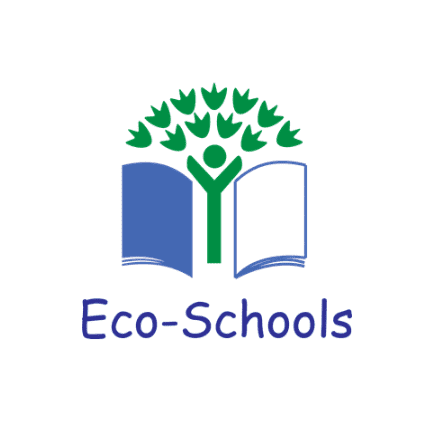Montessori Summer reading during Summer break offers a wonderful opportunity for you to nurture your child’s love of reading. Summer reading outside of the classroom creates a perfect environment to encourage reading in a relaxed, home environment. At Montessori House for Children and Elementary School, we believe in fostering a genuine passion for literature that extends far beyond the classroom walls by following the child’s natural curiosity.
The Montessori Approach to Reading
You’ll want to align your Montessori Summer reading with your child with what they will be experiencing in the classroom this Fall. In authentic Montessori education, reading is never forced or rushed. Instead, we create environments that naturally draw children toward books. Reading development follows the child’s natural progression: toddlers (18 months-3 years) experience books as sensory experiences, early childhood students (ages 3-6) are in the explosive period of reading development, and elementary students (ages 6-12) are ready for complex narratives that feed their growing understanding of the world. Incorporating this into your home, a Montessori Summer Reading plan will help your child feel more confident in the classroom after the break.
Creating Reading Environments at Home
For Toddlers (18 months – 3 years): Create a cozy reading corner with soft lighting, comfortable seating at your child’s level, and a basket of carefully selected books. Choose books with beautiful illustrations and minimal text—board books with real photographs of animals, nature, or everyday objects support vocabulary development while honoring their need for reality-based learning.
For Early Childhood (Ages 3-6): Create a reading nook with a small bookshelf at your child’s height. Include phonetic readers that support developing skills, plus beautiful picture books with rich vocabulary for shared reading time. Consider adding a small journal for drawing pictures about favorite stories.
For Elementary Students (Ages 6-12): Provide a comfortable reading space with good lighting and perhaps a small side table for water and bookmarks. Children can take ownership of their reading experience with a simple reading log to track favorite books, new vocabulary, or discussion questions.
Choosing Books That Align with Montessori Principles
- Reality Before Fantasy: Especially for younger children, prioritize books that reflect real experiences, animals, and places
- Beautiful Language: Choose books with rich vocabulary and beautiful prose—children absorb sophisticated language naturally
- Cultural Diversity: Select books representing diverse experiences and perspectives
- Child-Centered Stories: Look for books where children are capable protagonists who solve problems
Building Intrinsic Motivation
Rather than relying on external rewards, nurture the internal satisfaction that comes from reading itself:
- Follow Your Child’s Interests: If fascinated by dinosaurs or space, find high-quality books on these topics
- Connect Reading to Real Experiences: Visit a butterfly garden after reading about butterflies
- Create Opportunities for Sharing: Let children tell you about their books or draw favorite characters
- Model Reading Behavior: Let children see you reading for pleasure
Age-Specific Suggestions
Toddlers: Routine, language-rich books that can be read repeatedly—daily activities, simple nature stories, books with photographs of real objects.
Early Childhood: Mix phonetic readers with beautiful picture books, including poetry, folktales, and non-fiction about interesting topics.
Elementary: Chapter books, biographies, mythology, and books exploring different cultures and time periods.
Supporting Your Child’s Journey
Remember that every child’s reading journey is unique. Some devour books voraciously, others read slowly and deeply. Honor your child’s natural reading style while gently offering new experiences. If your child seems reluctant, consider whether the books match their interests and developmental level.
Focus on making reading a pleasant, pressure-free experience. The goal isn’t to race through books, but to develop genuine appreciation for the written word that will last a lifetime. Every book shared and cozy reading moment created contributes to cultivating the greatest potential within your unique child.
Local Library Resources
Don’t forget to explore the wonderful resources available through Fort Bend County Libraries (FBCL) this summer. Their Summer Reading Challenge offers age-appropriate programs for children (newborn to Grade 5), middle schoolers (Grades 6-8), and teens/adults. Participants can register online and log their reading progress to earn rewards like bookmarks, certificates, and reading trophies.
Beyond the reading challenge, FBCL hosts engaging special events including Pajama Night Story Time, Rise & Shine Story Time, Family Games & Jigsaw Puzzles, Library Space Camp, and magic shows. These programs provide wonderful opportunities to connect reading with social experiences and community engagement—perfectly aligned with Montessori principles of learning through real-world connections.
Visit the Fort Bend County Libraries website or check the Sugar Land Branch Library’s Facebook page for specific schedules and event details. These programs can complement your home reading environment beautifully.
Every book shared and cozy reading moment created contributes to cultivating the greatest potential within your unique child.
ABOUT MONTESSORI HOUSE FOR CHILDREN & ELEMENTARY SCHOOL
Montessori House, a family-owned and operated school since 2006, provides a continuum of Montessori education for ages 16 months through 6th grade. As an AMS Verified School committed to continuous improvement, our focus on Montessori authenticity cultivates joyful, self-motivated, and confident learners. We’re not just educating; we’re shaping future leaders. Our approach fosters curiosity, independence, and self-motivated learning, valuing the whole child—emotionally, socially, ethically, and academically. Students thrive in an environment that recognizes unique talents, providing opportunities for them to achieve their highest potential. Ideal students come from families who value holistic education, embrace cultural diversity, and have a natural enjoyment of learning and self-motivation.




